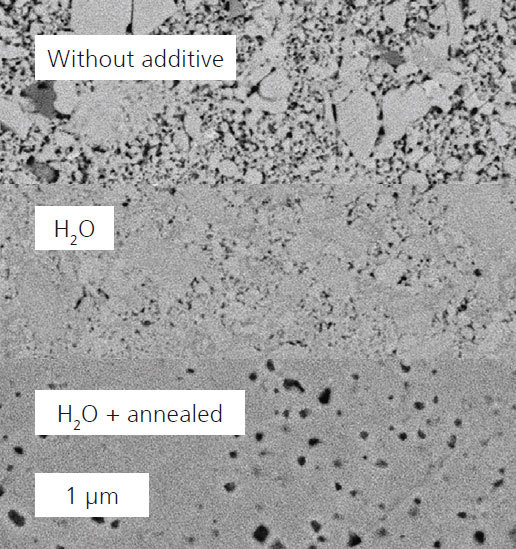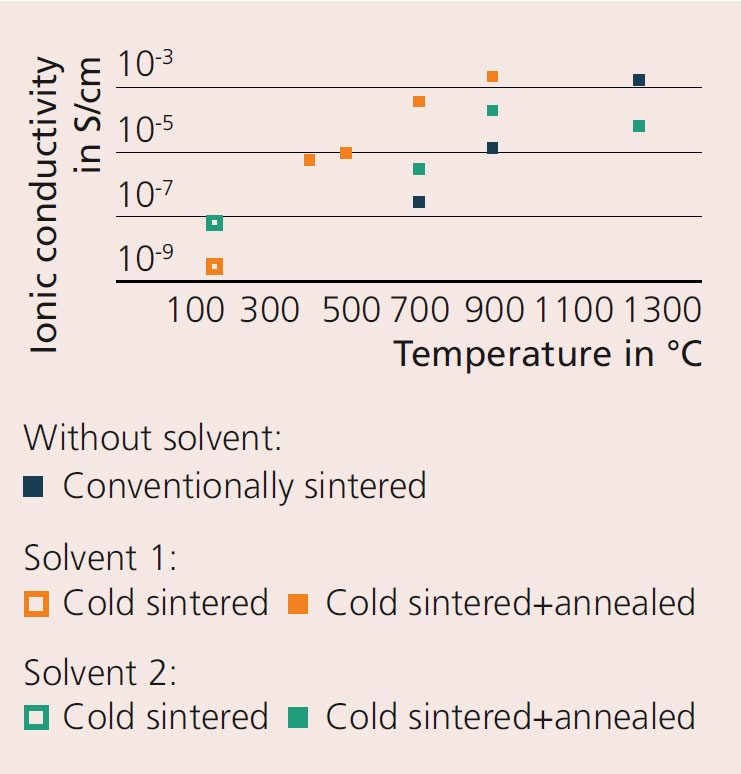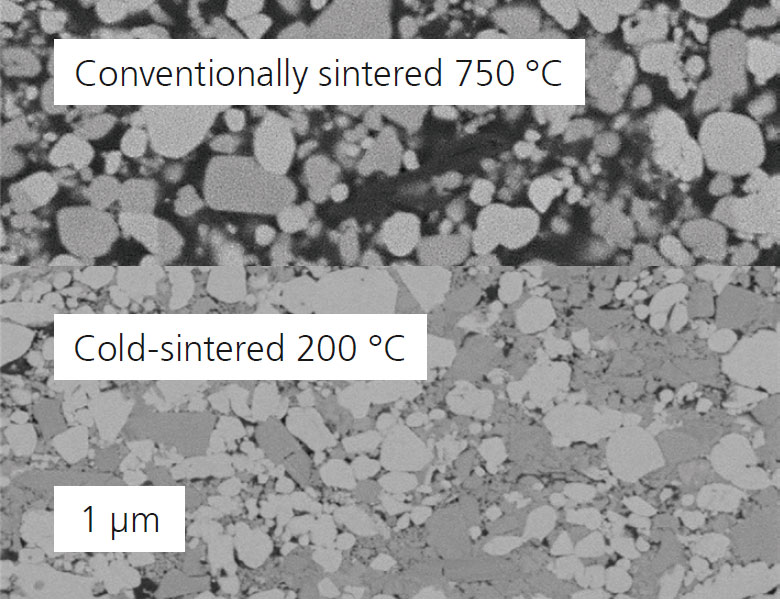
Cold sintering of materials for solid-state battery applications
Current research




The energy transition and electromobility are leading to a steadily increasing demand for power storage units with high energy and power densities. Currently, lithium-ion batteries with liquid electrolytes are mainly used for this purpose. Solid-state batteries are a promising alternative as they are also particularly safe. Fraunhofer IKTS is investigating innovative approaches, such as cold sintering for the production of components for lithium and sodium solid-state batteries.
Cold sintering
The cold sintering process has been attracting increasing attention in recent years as an energy-efficient sintering technique. In this process, materials are mixed with a liquid phase (water or solvent) and pressed at temperatures below 300 °C and pressures up to 700 MPa. The liquid phase causes dissolution and reprecipitation processes to take place in the microstructure. In this way, materials with densities comparable to those of conventionally sintered materials can be realized at a fraction of the conventional sintering temperature.
Solid electrolyte materials
The process parameters and solvents have been optimized for lithium (Li1.3Al0.3Ti1.7(PO4)3, LATP) and sodium ion-conducting (Na3.4Zr2Si2.4P0.6O12, NaSICON) solid electrolyte materials. Compared with dry-processed materials, the cold-sintered microstructures have significantly higher densities. After cold sintering at a maximum temperature of 200 °C, the electrolytes have relative densities of more than 90 %. However, scanning electron microscope studies show that amorphous secondary phases form at the particle contacts and between the electrolyte particles (top image). These reduce the ionic conductivity of the electrolyte materials. Thermal post-treatment reduced the secondary phases at the grain boundaries. As a result, ionic conductivities comparable to those of conventionally sintered electrolytes of 1.55 x 10-4 S/cm at 800 °C instead of 1080 °C for LATP [1], and 2.3 x 10-3 S/cm at 900 °C instead of 1300 °C for NaSICON (middle figure) were achieved.
Composite cathodes
Since solid-state batteries do not use liquid electrolytes, cathode composites of active and electrolyte materials have to be used for this purpose. At sintering temperatures such as those required for conventional sintering, the materials used react with each other and lose their electrochemical activity. Composite cathode tapes, developed at Fraunhofer IKTS, show reduced signs of these decomposition reactions after cold sintering at a maximum temperature of 200 °C. In addition, cold-sintered composites have significantly denser microstructures than conventional composites sintered at 750 °C (bottom image). Thus, cold sintering enables completely novel material combinations for the production of high-performance solid-state batteries.
Literature
[1] M. Vinnichenko et al, Nanomaterials 12, 3178 (2022)
Sponsored by
